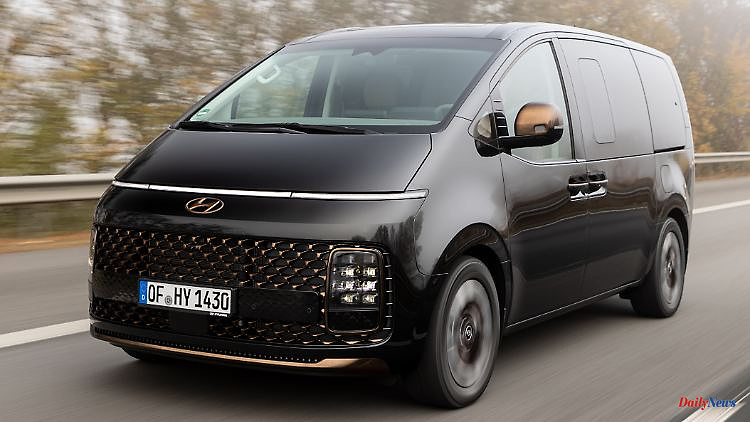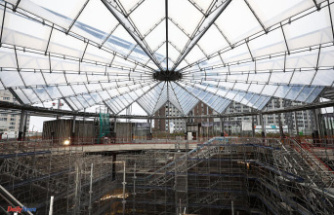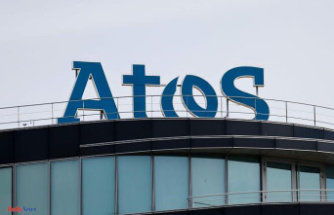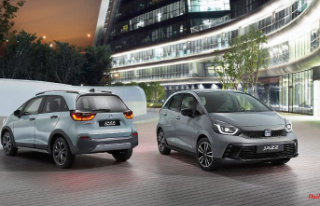The Hyundai Staria is an almost perfect car for large families. And at the same time a disaster for parents. Because in the MPV it is so obvious which is the best seat that it inevitably leads to arguments among the offspring. A driving and suffering report.
There are six seats to choose from in the Staria next to and behind the driver's workplace. But actually there are only two. Namely the two business class electric chairs in the middle of three rows. Thickly upholstered, with armrests, footrests and optionally ventilated or heated, they bring luxury class flair to the otherwise rather sober and practical minibus segment. If you keep your finger on the adjustment button long enough, the seat moves into an almost horizontal reclining position, which cannot be found even in the rear of a luxury sedan.
In comparison, the seat in the third row seems rather profane, despite the chic leather upholstery and impeccable ergonomics. Only those who sit at the back of the family or other internal group hierarchy take a seat there. Since this has to be renegotiated every day, each departure is delayed until a suitable compromise is found. As a rule, it looks like there are stops along the way to swap places.
The two comfort armchairs are the highlight and weak point of the Staria. The latter is due not only to their arguable popularity, but also to their size and bulkiness. Unlike standard individual seats, they do not have a folding function that makes it easier to get into the rear. If you want to get to the back, you have to push your way between them. At the latest with hand luggage and winter jackets it gets tight.
In general, the variability in the interior is rather moderate, the adjustment paths of the armchairs and benches are comparatively short. Hyundai does not plan to remove the chairs, even if do-it-yourself instructions are already circulating on the Internet. Probably also because the luggage space behind row three is comparatively small and should hardly be enough for vacation trips with seven people. After all, the seats in the third row can be folded up for bulk purchases so that luggage can be stored there. But the same applies here: First you have to get past the bulky middle seats.
In general, the Staria still has potential for everyday usability. For example, there is no button in the cockpit for remote operation of the side electric sliding doors. On the other hand, the telephone system at the driver's workplace shows that the Koreans find practical and original solutions. It transmits the driver's voice crystal clear in row three while driving. At the same time, an interior camera provides him with a picture of what is happening in the far rear.
Such technical tricks also go well with the futuristic flair of the minibus. From the outside, with its smooth body and narrow front lights, it stands out from the grey-mouthed design framework in the passenger transporter segment. And the interior, with its large screens and touch-sensitive buttons, exudes more spaceship than van flair. However, Hyundai has saved the large number of practical storage compartments from the commercial vehicle segment, which can be found in the doors, the center console and the dashboard.
The top variants of Mercedes V-Class or VW Multivan also offer a similarly chic ambience as the Staria. However, at significantly higher prices. At 57,550 euros (all-wheel drive model: 59,600 euros), the seven-seater Staria is not a bargain, but it is fairly positioned given its size and level of comfort. The variant for seven is currently only available in the "Signature" line, which offers extensive equipment and a sophisticated ambience. Leather seats, two-zone air conditioning, Bose sound system and electric motors for the sliding doors and tailgate are always on board.
A less luxurious nine-seater version is in the pipeline, but will be aimed less at families and more at commercial users. In all cases, the engine is a rather shirt-sleeved 2.2-liter four-cylinder diesel with 130 kW/177 hp, eight-speed automatic transmission and all-wheel drive technology, which does not quite match the spacey appearance of the Hyundai, but also does not stand out too much due to proper insulation plays.
The chassis is tuned rather tightly to cope with high payloads. In everyday life, this leads to a somewhat bumpy handling; Bumps and potholes are clearly reflected in the interior. But other minibuses can't do it better either. Also decent average: the consumption of around 9 liters.
With a length of 5.25 meters, the Staria is not exactly handy and is probably a little oversized for most large families with small children. But since the classic van segment has died out, the minibus has become the vehicle of choice for people who want to travel comfortably with five or more people.
In this class, the Hyundai is definitely the most visually interesting model. And the cockpit futurism and the luxury flair in the second row set it apart from the competition. Smaller practical weaknesses can be coped with - also in view of the price. A little equanimity is necessary, however, in order not to let the ongoing disputes over seating spoil your enjoyment.
Hyundai Staria Signature - specifications












